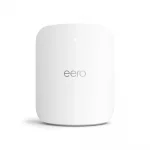2019 vs 2015 Netflix UK Video Streaming Broadband ISP Speed Index

It’s that time of the year again when we take a look back to see how video streaming speeds by different broadband ISPs have changed for UK users of Netflix’s popular internet movie and TV service, which this year adds the impact from Vodafone’s fixed line service and oddly splits TalkTalk’s “fibre” and “DSL” connections.
As usual we find that the performance – measured during November of each year – across all of the largest UK home broadband providers has only increased a little over the past 12 months. Indeed the average speed (Megabits per second) for most providers is still struggling to push much above 4Mbps (Megabits per second) and we’ll come back to that later.
Otherwise the fastest UK provider by Netflix continues to be cable and fibre optic operator Virgin Media, which delivered a top streaming speed of 4.48Mbps. Meanwhile TalkTalk’s DSL network came bottom on 3.38Mbps but confusingly they’ve now split TalkTalk’s “DSL” and “Fibre” networks into two, although the latter could easily mean FTTC (VDSL2) or FTTH (we don’t think they have enough FTTH users to register a proper score).
Advertisement
The other big change this year has been the addition of Vodafone to the table, which appears to reflect the results of their FTTC and FTTH customers (mostly FTTC as their FTTH coverage via Cityfibre remains tiny).
| ISP | 2019 | 2018 | 2015 |
| Virgin Media | 4.48Mbps | 4.30Mbps | 3.98Mbps |
| BT | 4.45Mbps | 4.22Mbps | 3.78Mbps |
| TalkTalk Fibre (FTTC/H) | 4.36Mbps | no data | no data |
| EE | 4.24Mbps | 3.97Mbps | 3.27Mbps |
| Plusnet | 4.13Mbps | 4.01Mbps | 3.48Mbps |
| Sky Broadband | 4.13Mbps | 3.86Mbps | 3.33Mbps |
| Vodafone | 4.12Mbps | no data | no data |
| TalkTalk (Combined) | no data | 3.79Mbps | 3.42Mbps |
| TalkTalk DSL | 3.38Mbps | no data | no data |
However the above results must be given the correct context because they’re essentially just a measure of Netflix’s own video streaming performance. Put another way, the index should never be taken as a table that reflects the actual capability of your own home broadband connection, although some other reports have incorrectly explained it like that.
The reason the speeds are so low is because they’re being influenced by a number of key factors, not least the proportion of subscribers who are viewing content in either a low video quality SD (Standard Definition), higher quality HD (High Definition 720p+) or even a 4K (UltraHD) bitrate stream.
Crucially Netflix offers three packages (Basic – £5.99, Standard – £8.99 and Premium – £11.99) and the most popular ones are usually the cheapest two. However, the ‘Basic’ plan only supports SD quality streaming on 1 device, while ‘Standard’ supports HD streaming on 2 devices and ‘Premium’ supports up to 4K streaming on 4 devices. This is important because the transfer speed requirements are influenced by content quality.
Advertisement
Netflix’s Recommended Connection Speeds
* 0.5Mbps – Required broadband connection speed
* 1.5Mbps – Recommended broadband connection speed
* 3.0Mbps – Recommended for SD quality
* 5.0Mbps – Recommended for HD quality
* 25Mbps – Recommended for Ultra HD quality
In other words the results from each ISP above suggest that the majority of Netflix users are streaming videos at HD and SD, which is reflected in why most of the scores hover around 4Mbps+. But the results can also be impacted by other factors including video codecs / compression (i.e. bitrates vary as the video stream changes), slow home WiFi, home network congestion and any ISP-side Traffic Management measures etc.
Similarly ISPs that offer significantly faster speeds are more likely to represent Netflix users with a greater proportion of HD or even 4K accounts, thus it’s no surprise to find that Virgin Media come top of the big boys because their entry-level package is a respectable 50Mbps or 100Mbps.
Over time the rising uptake of faster broadband connections and 4K screens should push the results upwards, although this could be countered by future price hikes that cause users to downgrade on to a lower tier. The results from other countries also tend to be very similar to the UK (e.g. South Korea is one of the fastest countries in the world for broadband but its top ISP is LG U+ at 4.35Mbps).
Ultimately the usefulness of Netflix’s data is questionable and the streaming giant might do better to display extra details, such as by splitting out the difference in performance between SD, HD and 4K streaming, as well as at different times of the day (e.g. peak vs off-peak). Sadly they’ve never provided that information or offered data for smaller ISPs.
Advertisement
Mark is a professional technology writer, IT consultant and computer engineer from Dorset (England), he also founded ISPreview in 1999 and enjoys analysing the latest telecoms and broadband developments. Find me on X (Twitter), Mastodon, Facebook, BlueSky, Threads.net and Linkedin.
« The Top 2019 vs 2018 Fastest UK Mobile and Home Broadband ISPs
BDUK – Q3 2019 Superfast Broadband Take-up by UK Region »






















































Comments are closed